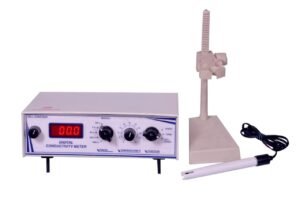Pan Balance Precision Instrument by Petropath Fluids India Limited
In today’s demanding global and India-focused energy sector, reliable measurements are the foundation of safe, efficient, and cost-effective operations. The Pan Balance precision instrument by Petropath Fluids India Limited represents a benchmark in mud laboratory equipment, crafted to deliver top-tier performance in drilling fluid analysis and fluid density measurement.
What is Pan Balance & Why It Matters
A Pan Balance Precision Instrument is a mechanical laboratory device used for determining the mass (weight) of substances, especially in drilling muds and semi-liquid fluids. In oilfield and research labs, knowing the precise weight allows engineers and scientists to calibrate mud densities, validate additive concentrations, and ensure fluid behaviors are predictable under harsh field conditions.

Key Features of Petropath’s Pan Balance Precision Instrument
Below are the features that make this instrument best‑in‑class in mud laboratory equipment:
High‑Precision Measurement
The instrument ensures accurate readings with minimal deviation, offering engineers trustworthy data in both controlled lab settings and field environments.Robust Stainless‑Steel Construction
Corrosion‑resistant materials and durable arms/components mean that even in harsh oilfield conditions—humidity, abrasives, chemical exposure—the Pan Balance remains reliable.Dual‑Pan / Traditional Beam Configuration
Allows comparative weight checks and supports specific gravity analyses often required during drilling fluid analysis.User‑Friendly Design
Features like smooth movement arms, clearly marked counters, easy calibration knobs, and built‑in leveling improve usability for lab technicians and field engineers alike.Portable & Compact
Designed for mobility: lightweight yet sturdy, facilitating transportation to rig sites without compromising stability—useful when fluid density measurement must be done on location.
Benefits of Using Pan Balance Precision Instrument in Oilfield Testing
Integrating this instrument into your testing workflow delivers multiple benefits:
Enhanced Laboratory Accuracy – Ensures data integrity for drilling fluid analysis procedures. Accurate density and mass measurements reduce variability.
Time‑Saving Efficiency – Quick, reliable readings minimize delays between sample collection, analysis, and decision‑making in operations.
Cost‑Effective Durability – Construction and components are built to last in rugged environments, reducing maintenance and replacement costs over time.
Compliance & Quality Assurance – Adheres to international and industry standards. Useful for labs that must meet ISO/IEC 17025, API RP standards, or other regulatory regimes. (Note: many oil companies and tenders in India explicitly require mud lab equipment—including balances—conform to API or similar standards.) azalab.in+3Oil India Limited+3labtechplus.com+3
Operational Safety – Precise fluid density measurement helps avoid well control issues. Incorrect density can lead to influxes, formation damage, or worse.
Application Areas & Use Cases
The Pan Balance precision instrument is suited for a wide range of applications, globally and in India:
Mud Laboratories
Daily checks of drilling fluid additives, solids content, and specific gravity.Field / Oilfield Services
On‑site fluid density measurement during well drilling to adjust mud weight, ensuring stability.Educational & R&D Labs
For petroleum engineering departments, research into novel drilling fluids, additive testing, and fluid behavior under varied conditions.Quality Control & Tender Compliance
Many tenders or regulatory contracts in the Indian oil & gas sector require mud laboratory equipment to include reliable balances, calibrated and traceable.
Technical Specifications & FAQs
Below are typical specifications and answers to common questions:
Weight Capacity: Standard models support up to around 500 grams with fine resolution suitable for drilling fluid samples.
Range & Resolution: Often calibrated for specific gravity between approximately 0.8‑2.7 g/cm³ which covers most mud densities. (Comparable models are used in similar equipment lines.)
Construction Material: Stainless steel for pans, beam, counterweights; corrosion‑resistant surfaces; sealed cups with lids to prevent spillage in field conditions.
FAQs
How Pan Balance Aids Cost & Performance Optimization
Using the Pan Balance precision instrument leads to tangible business value:
Reduced Non‑Productive Time (NPT) by avoiding drilling issues rooted in mis‑measured mud densities.
Optimised Additive Use: knowing precise weights ensures additives are neither under‑ nor over‑dosed, saving chemical costs.
Improved Drilling Rate & Efficiency: stable fluid properties help maintain equivalent circulation density, reduce formation damage, and improve bit life.
Better Tender Compliance & Reputation: delivering accurate testing & reliable performance enhances credentials with oil companies and regulators.
Global & India Context: Why Engineers & Researchers Should Care
In India, oil & gas tenders (e.g., those issued by Oil India Ltd.) often list mud laboratory equipment—including mud balances—as mandatory.
Globally, API RP 13‑series, ISO/ASTM standards for mud testing, lab accreditation like ISO/IEC 17025, require accurate fluid density measurement and well‑calibrated instruments.
For researchers, precision instruments like Pan Balance reduce measurement error, improve reproducibility of experiments in drilling fluid formulation, rheology, solid content, etc.



I am also commenting to make you understand what a brilliant encounter my friend’s child experienced reading your site. She picked up several things, which included what it is like to have an incredible coaching mood to get other folks just completely grasp a number of hard to do subject areas. You undoubtedly did more than our expected results. Many thanks for distributing such helpful, trustworthy, educational as well as unique tips about that topic to Janet.